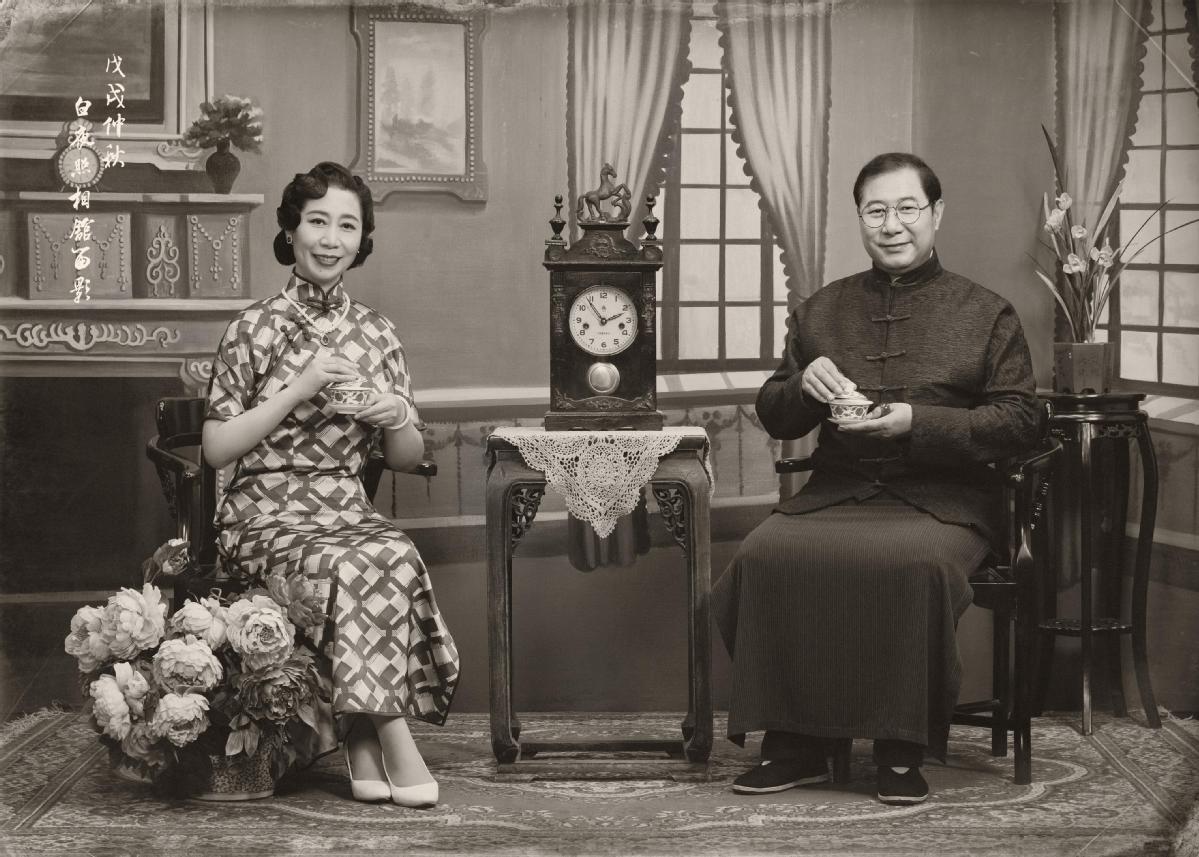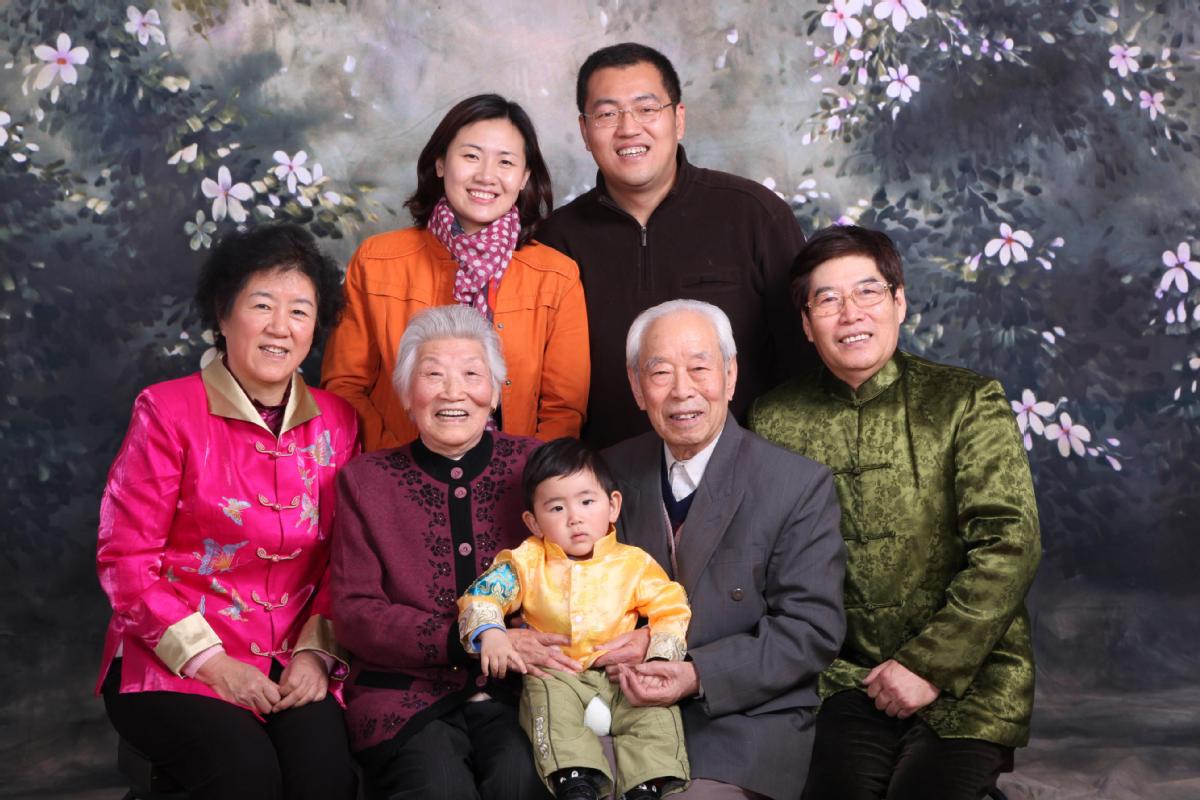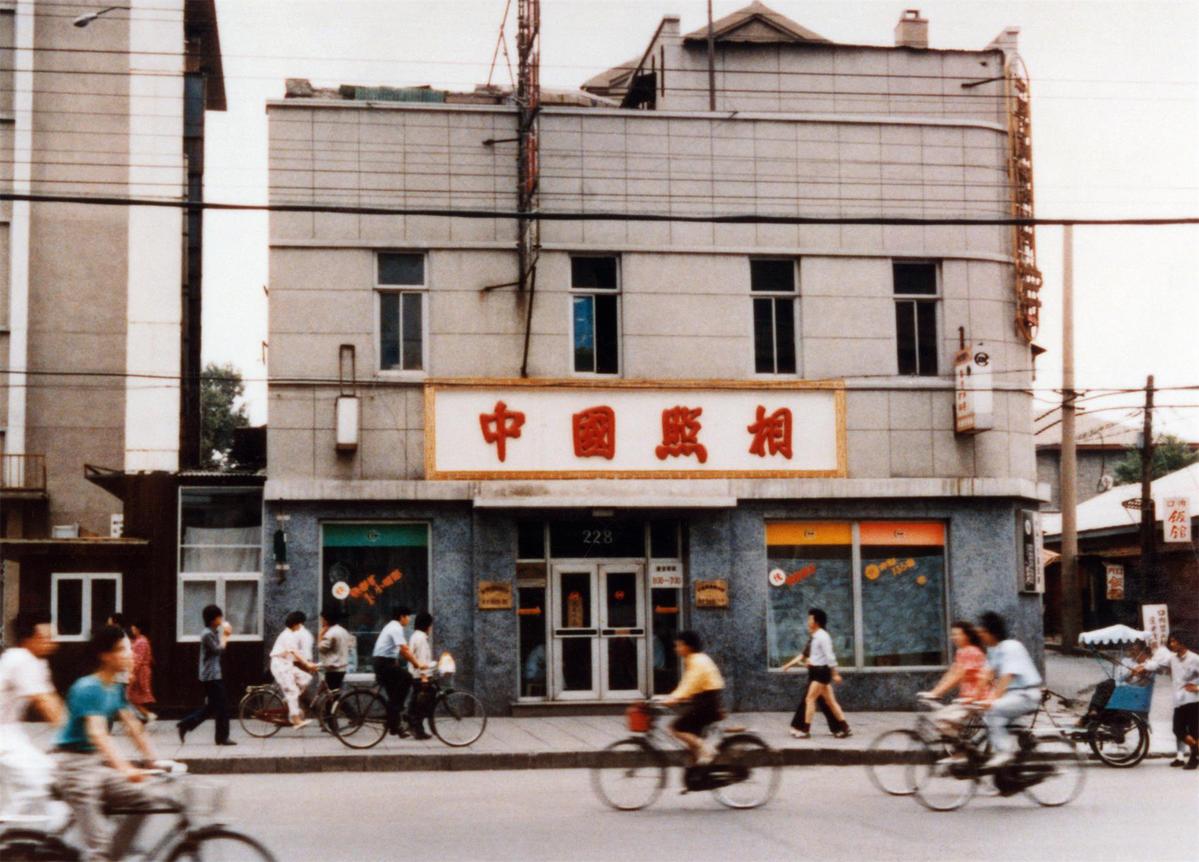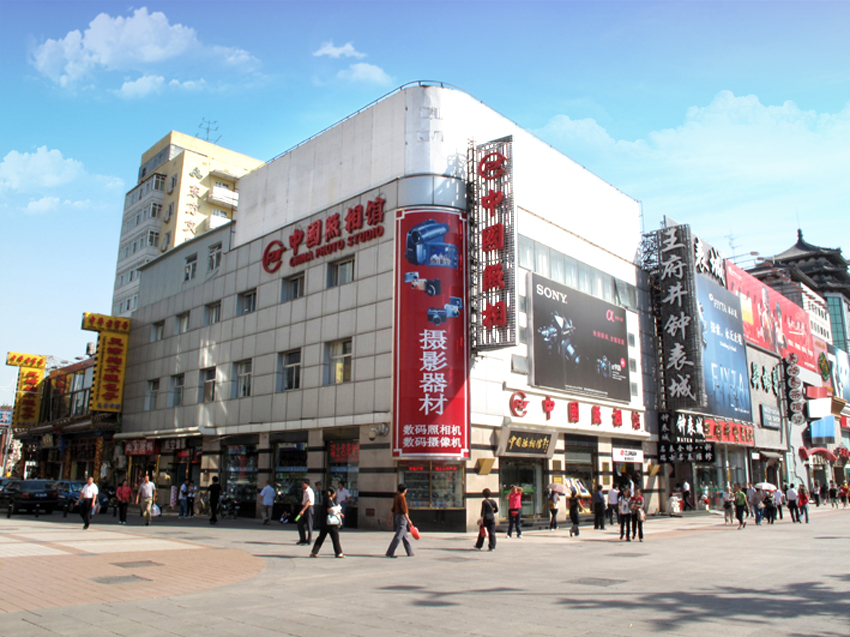It has been a ritual since childhood for Sun Yumiao to take family photos during Spring Festival at the China Photo Studio in Beijing.
 White Nights Photo Gallery in Beijing offers vintage-style black-and-white photos like those from the early 20th century. (Photos: China Daily)
White Nights Photo Gallery in Beijing offers vintage-style black-and-white photos like those from the early 20th century. (Photos: China Daily)
Her family has been taking such photos every two or three years around the Lunar New Year. The last time was in 2017, and they're planning to take new photos this year, too.
The first day of Spring Festival fell on Feb 5 this year.
"I will forever cherish such happy moments with my parents," Sun, 31, says.
In the old days, it was a luxury for Chinese to go to a photo studio. It was seen as an important family event. Nowadays, with digital cameras and smartphones commonplace in China, people can take photos wherever and whenever they like. Still, some Chinese enjoy the process of posing at studios because it also means family reunions.
Sun, who's an office clerk, and her parents, for instance, dress in their favorite clothes before visiting the studio. Then they hang out together and enjoy a hearty meal at a restaurant for special dishes, such as Peking duck.
China Photo Studio was founded in Shanghai in 1937. It was relocated to Beijing's Wangfujing commercial street in 1956. Chinese leaders and other celebrities from home and abroad get their photos taken at the studio, according to the photo studio's publicity department. The late premier Zhou Enlai was a patron.
The studio was recognized as a "time-honored brand" of the country by the Ministry of Commerce in 2006.
"We often take black-and-white photos because we like vintage style," Sun says.
"When you look at old photos, you recall the time when the elders in your family doted on you, some of whom may have passed away. I have never seen some elders in my family but have heard about them. I'm able to visualize their lives through such images."

Many families visit China Photo Studio in Beijing to take family photos as a tradition.
When she was a primary school student, a photographer would be invited to their home to take a photo of the extended family, who gathered for her grandparents' birthdays. Sun says her parents like to visit the studio because of its long association with her family.
Sun's grandparents started to take her parents there for photos when they were kids. While growing up, her parents also went there to mark crucial moments of life, such as when they got their first job.
Zhang Yi, a freelancer, says that, although he often uses a camera and tripod to take family photos, he prefers the ones taken at the China Photo Studio.
"As a shutterbug, I have great affection for studios," the 54-year-old says. "I believe such photos are an inheritance of the past. They provide a sense of nostalgia."
Zhang says his parents took him to the China Photo Studio for his birthday photos and family photos when he was young.
"After my daughter was born, I started taking her there for her photos."
Zhang still has many old black- and-white family photos that record his family history.
In some other photo studios, images are shot following set patterns.
"People may look perfect in the images but they don't look like themselves at all."
He notices photo studios in China cater to different customer demands. Children's photography and wedding shots are popular.

Many families visit China Photo Studio in Beijing to take family photos as a tradition.
Many regular customers of China Photo Studio like taking photos there, because they don't appear unrealistic.
"They only retouch the photos a bit, so you still look your age. Over the years, these photos have recorded your life and show how you have aged. When you are in your 50s, it is meaningless to try and beautify your images to make them look like you're in your 40s or 30s," Zhang says.
"The wrinkles look just fine in the photos."
Bao Chen, the office director of China Photo Studio, says the studio pursues natural beauty in its portrait photography.
"As a time-honored brand, we stick to our old traditions in photography and also keep up with modern times."
The studio follows an old style of photography, which makes it easy for customers to accumulate such family photos over decades, he says. The studio's most popular products are family photos and children's photos that record a family's history and show the growing up years of children.
"People like to take photos to mark important family moments, such as elders' birthdays and children's college graduations."
The peak seasons for the studio are festivals and holidays. During Spring Festival, the studio welcomes about 300 families a day, according to Bao. On regular weekends, customers wait for two or three hours before getting their pictures taken, he adds.
Many customers of the studio today were born in the 1970s and '80s. Usually couples visit with their children and parents. A family photo often has six or eight people in it.
"With the development of photography in recent years, taking family portraits is now different," says photographer Wang Xin, who has worked at the studio for about 30 years.

China Photo Studio in Beijing in 1956, when it was relocated from Shanghai to the capital's Wangfujing commercial street.
He says that in the non-digital era, the shutter speed was slower and people had to hold their poses and expressions until the photo was done. Photographers used a knife, pencils and Chinese writing brushes to retouch film and photos. They also painted black-and-white photos with special paint.
These days, photographers in studios can capture a person's expressions with a single-lens reflex camera, and a soft light can make the photos appear "delicate". In addition, they can use Photoshop to retouch images.
"Most black-and-white photos in the past were four or six inches. The current photos are bigger, with more spacious frames. These make it easier for the elderly to view them, and they feel less lonely when their children are not at home," he says.
Guan Jian, a 35-year-old university lecturer, recently went to Elefoto, another photo studio in Beijing, to get photos taken with his wife and 2-year-old son.
"The photos have elements such as the round moon, which symbolizes family reunions in Chinese culture," he says.
He found the studio's lighting to be professional, he says. The makeup artist used a doll to make his son laugh and the photographer used a softer flash to protect the child's eyes.
"It's difficult to shoot square photos because you need to capture the center. We respect our customers' temperaments and don't make them pose," says Chong Xiaojie, the studio's chief operating officer.
The studio's target customers are middle-income families with one or two children.
While nearly all photo studios in China have started using single-lens reflex cameras, Beijing's White Nights Photo Gallery is an exception.
Besides digital cameras, they use old-style, wooden cameras and an authentic century-old lens and develop film the old way. The studio has updated the old cameras to improve functionality and purchased some old-style cameras produced in modern times.

The current look of China Photo Studio.
The studio collects old items from the secondhand market to use as props, including a gramophone, old clocks and furniture. The studio provides old backdrops and costumes. Customers are drawn to its vintage-style black-and-white photos, which appear similar to those taken in the early 20th century, when photo studios were springing up in China.
The studio became well-known after shooting family photos of Chinese A-list actor Liu Ye in 2014.
White Nights Photo Gallery uses old-style cameras, which need a long exposure time, for portraits. As it's hard for children to keep still for long, they use digital cameras to take family photos.
"Photo studios used to be places for Chinese to learn about photography. As time passes, fewer people are going to the studios and the number of photo studios is falling," says Yang Wei, who co-founded the studio in 2013.
His original idea was to make a copy of a photo studio from the early 20th century.
As some Chinese people carry on the tradition of shooting family photos at a studio, especially during Spring Festival, they have more options than before.


